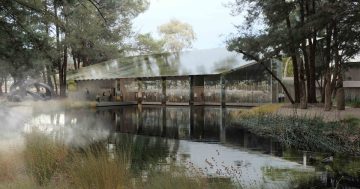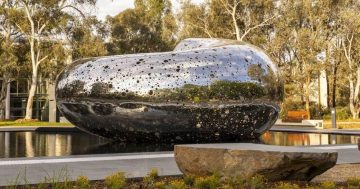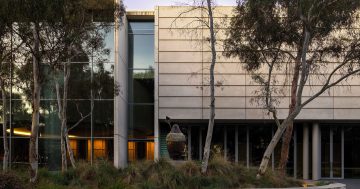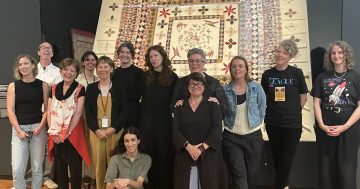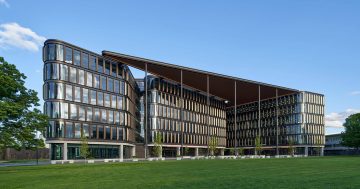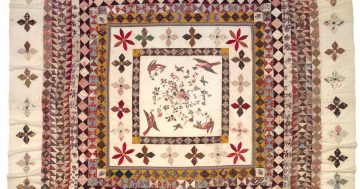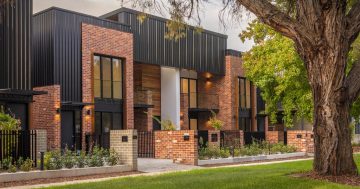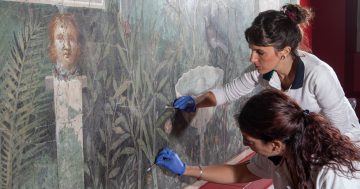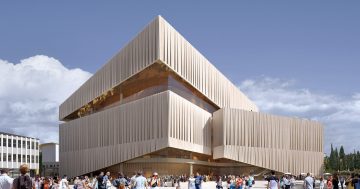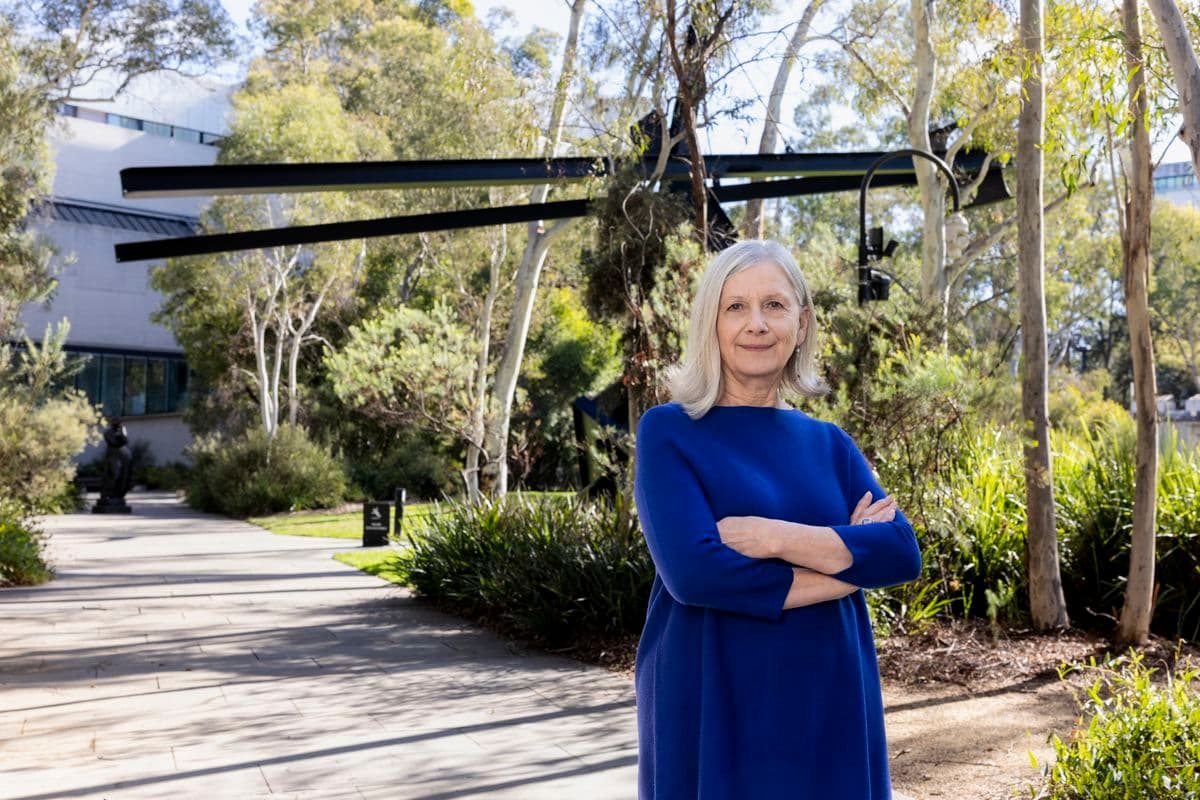
Landscape architect Annabelle Pegrum has worked with the NGA to shape the garden design competition. Photo: NGA.
After years of gentle decline, the National Gallery’s iconic sculpture garden will undergo a $60 million revitalisation with the launch of a design competition this week.
Designed by Harry Howard & Associates, the original plan echoed the triangular shapes that repeat through the gallery building. The intention was for seasonal gardens that would reflect the climate on the Limestone Plains, responding to the building’s bush-hammered concrete exterior.
But as the institution struggled with funding for the artworks inside, the exterior also suffered despite the addition of a new garden at the entry to the Gandel Hall, housing James Turrell’s Skyspace and the relocated George Baldessin pears.
Overgrown shrubbery and worn paths let down the beautiful lakeside setting. Saddest of all is the Fiona Hall fern garden. Designed as an Australian echo to enclosed paradise garden principles, what should be pristine white pebbled paths are overgrown with moss and mould and water rarely runs along the curving rills.
And rather than finding this treasure as the culmination of a stroll through the gardens, visitors must scramble through a carpark and past the shuttered entry to what was once a waterside restaurant but now faces a dank pond. Often, the fern garden gates are padlocked.
Now, however, the National Gallery will conduct an open-call two-stage competition to select a design team that can create an innovative design incorporating a public place for experiencing art, education, cultural and social events while respecting the garden’s original design intent and heritage values.
The winner of the competition will lead a major redevelopment to revitalise the 3-hectare garden surrounding the National Gallery, reinforcing its position as the most significant sculpture garden in Australia.
National Gallery Director Dr Nick Mitzevich said, “The National Sculpture Garden is a major part of the National Gallery identity and a treasured site for many of our visitors. Considered a striking example of Australian landscape design, the original design was never fully completed and has not seen significant investment over many years.
“We are launching this major project to revitalise and bring the garden into the 21st century”.
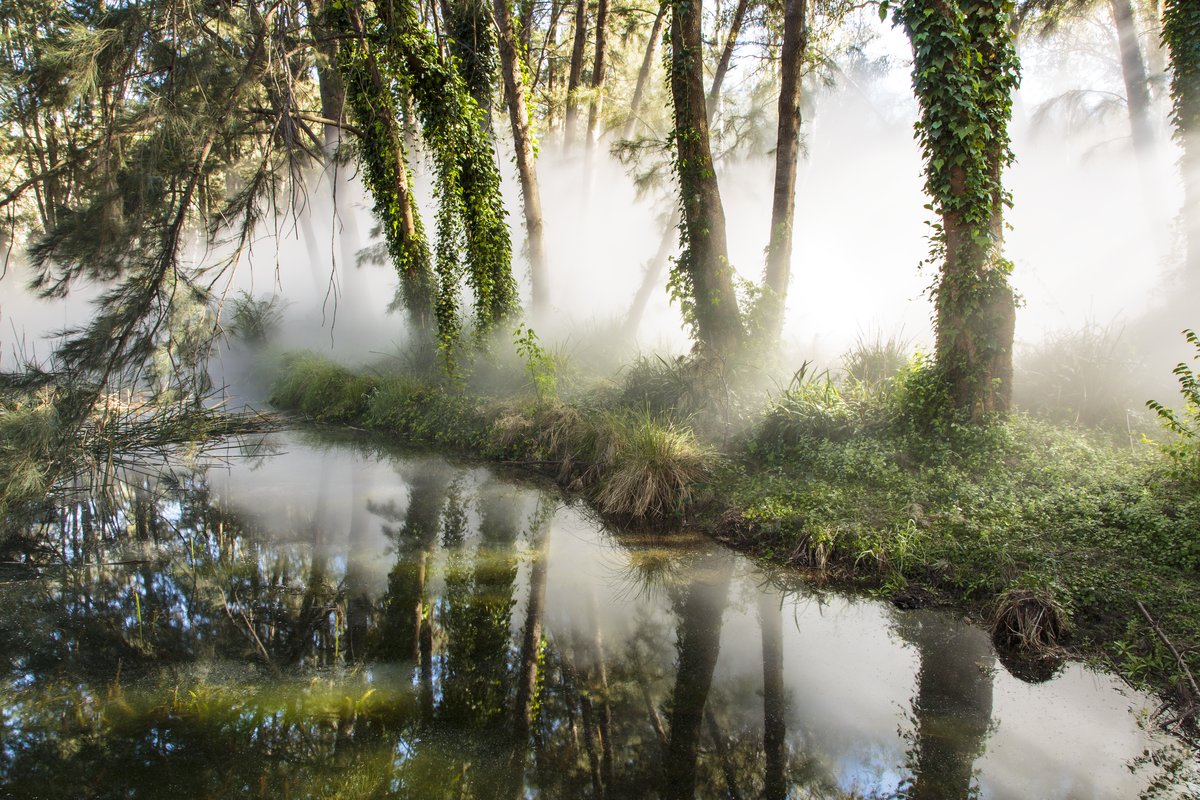
Fujiko Nakaya’s fog sculpture is a much-loved part of the NGA sculpture garden. Photo: NGA
The competition is open to all design teams and encourages multidisciplinary partnerships from Australia, overseas or a combination of both. Applicants are encouraged to include a landscape architect, an Australian First Nations practitioner, artist, architect and botanist or horticulturalist.
The garden includes sculptures and installations by leading Australian and international artists, from early additions by Bert Flugelman, Clement Meadmore and Auguste Rodin to contemporary works by Thancoupie and the much-loved fog machine by Fujiko Nakaya.
The National Gallery has worked in collaboration with Life Fellow of the Australian Institute of Architects Annabelle Pegrum and technical advisors to guide the competition in compliance with expectations. The Australian Institute of Architects and the Australian Institute of Landscape Architects have endorsed the competition.
The gallery says the Stage One Competition Brief has been developed in collaboration with a panel of eminent individuals with industry experience across a wide range of fields, including landscape design and architecture, art, architecture, education, heritage, accessibility and botany.
The competition encourages unique and imaginative conceptual designs that create a responsive landscape of resilience designed to mitigate climate change and enhance mature trees and other plantings. Considerations of sustainability, accessibility and embedding First Nations principles are integral to the future design of the garden.
Entries for Stage One close at 12 noon on Wednesday, 29 May 2024. Entries will be assessed by the jury anonymously, and a shortlist will be announced in June 2024 for progression to Stage Two.
In Stage Two, shortlisted entrants will be invited to further develop their conceptual designs for consideration by the jury. The winning design will be revealed in October 2024.
The full stage one competition conditions, brief and entry requirements are available here.












